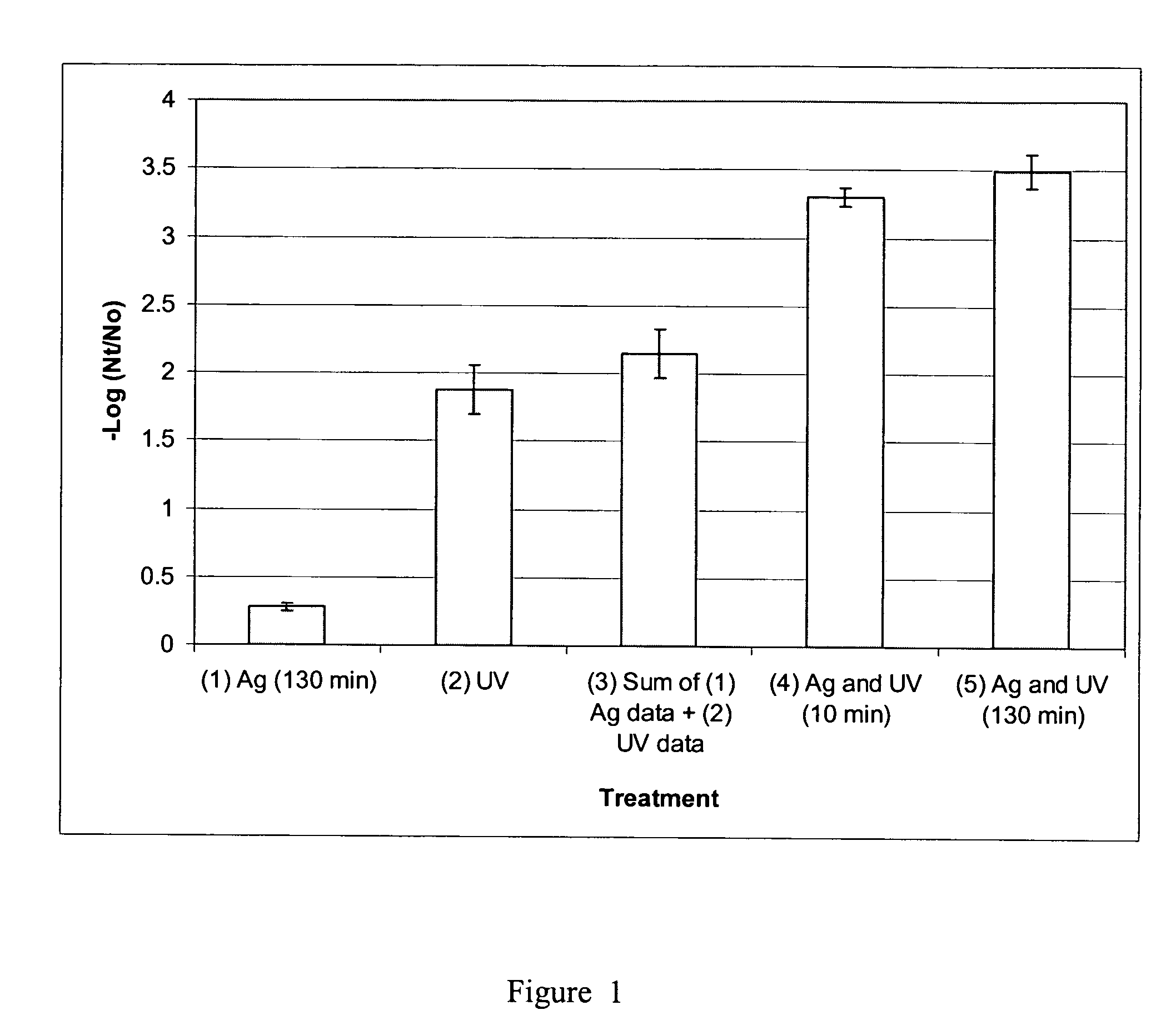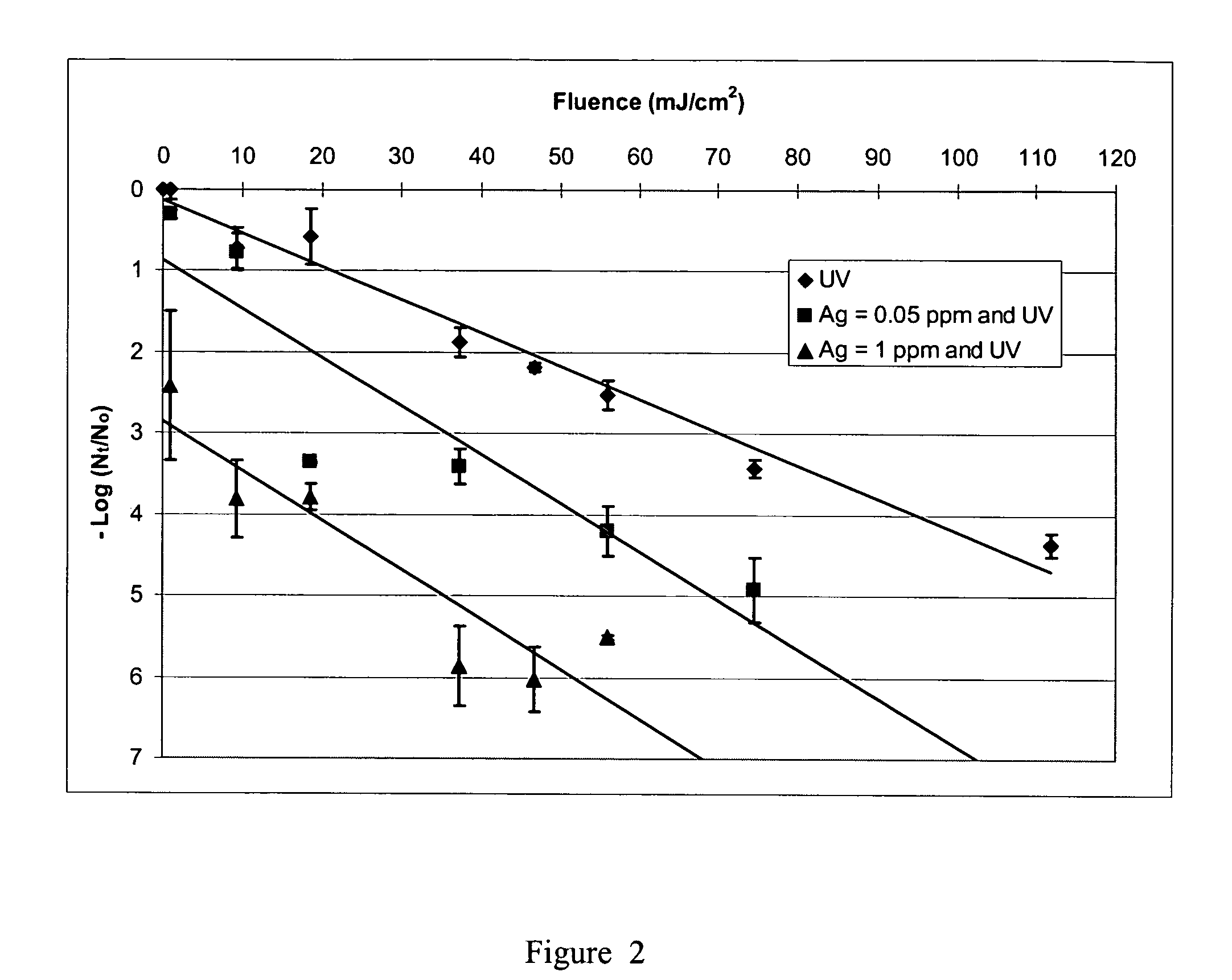Method for improving ultraviolet radiation disinfection of water using aqueous silver
a disinfection method and technology of silver, applied in the field of silver and ultraviolet radiation disinfection of water, can solve the problems of odor and taste of chlorine in drinking water, the inability to use filters to remove biological contaminants, and the inability to meet the needs of municipal water treatment facilities, etc., to achieve the effect of reducing the formation of carcinogens, and no odor or taste in water
- Summary
- Abstract
- Description
- Claims
- Application Information
AI Technical Summary
Benefits of technology
Problems solved by technology
Method used
Image
Examples
example
[0025]The data presented below were collected while studying the effects upon inactivation of viruses in an aqueous environment of silver ions and UV radiation, individually, and using the synergistic combination of silver ions and UV radiation according to the invention. In the latter case, irradiation was conducted both before and after virus samples were contacted with silver ion. Thus, FIG. 1 illustrates graphically the inactivation of MS-2 by silver alone (0.1 mg / L) (bar 1), UV radiation alone (target fluence of 40 mJ / cm2 corrected to 37 mJ / cm2 using Petri, sample absorbance, and divergence factors, Bolton et al., vide infra) (bar 2), the arithmetic sum of ((bar 1)+(bar 2)) (bar 3), silver (0.1 mg / L for 10 min) followed UV radiation (ca. 40 mJ / cm2) then neutralized to terminate silver disinfection immediately (10 min total silver exposure) (bar 4), and silver (0.1 mg / L for 10 min) followed UV radiation (ca. 40 mJ / cm2) then neutralized 120 min after exposure to UV (130 min total...
PUM
| Property | Measurement | Unit |
|---|---|---|
| wavelength | aaaaa | aaaaa |
| wavelength | aaaaa | aaaaa |
| concentration | aaaaa | aaaaa |
Abstract
Description
Claims
Application Information
 Login to View More
Login to View More - R&D
- Intellectual Property
- Life Sciences
- Materials
- Tech Scout
- Unparalleled Data Quality
- Higher Quality Content
- 60% Fewer Hallucinations
Browse by: Latest US Patents, China's latest patents, Technical Efficacy Thesaurus, Application Domain, Technology Topic, Popular Technical Reports.
© 2025 PatSnap. All rights reserved.Legal|Privacy policy|Modern Slavery Act Transparency Statement|Sitemap|About US| Contact US: help@patsnap.com



